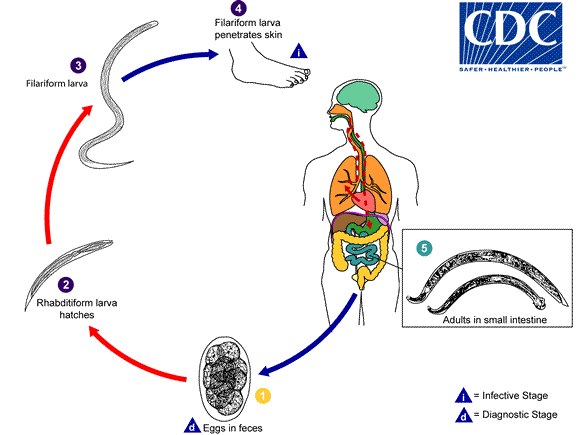Archive for the ‘Hookworm’ Category
Ancylostoma ceylanicum Hookworm in Myanmar Refugees, Thailand, 2012–2015
Thursday, July 19th, 2018O’Connell EM, Mitchell T, Papaiakovou M, Pilotte N, Lee D, Weinberg M, et al. Ancylostoma ceylanicum Hookworm in Myanmar Refugees, Thailand, 2012–2015. Emerg Infect Dis. 2018;24(8):1472-1481. https://dx.doi.org/10.3201/eid2408.180280

“During 2012–2015, US-bound refugees living in Myanmar–Thailand border camps (n = 1,839) were surveyed for hookworm infection and treatment response by using quantitative PCR. Samples were collected at 3 time points: after each of 2 treatments with albendazole and after resettlement in the United States. Baseline prevalence of Necator americanus hookworm was 25.4%, Ancylostoma duodenale 0%, and Ancylostoma ceylanicum (a zoonosis) 5.4%. Compared with N. americanus prevalence, A. ceylanicum hookworm prevalence peaked in younger age groups, and blood eosinophil concentrations during A. ceylanicum infection were higher than those for N. americanus infection. Female sex was associated with a lower risk for either hookworm infection. Cure rates after 1 dose of albendazole were greater for A. ceylanicum (93.3%) than N. americanus (65.9%) hookworm (p<0.001). Lower N. americanus hookworm cure rates were unrelated to β-tubulin single-nucleotide polymorphisms at codons 200 or 167. A. ceylanicum hookworm infection might be more common in humans than previously recognized.”


